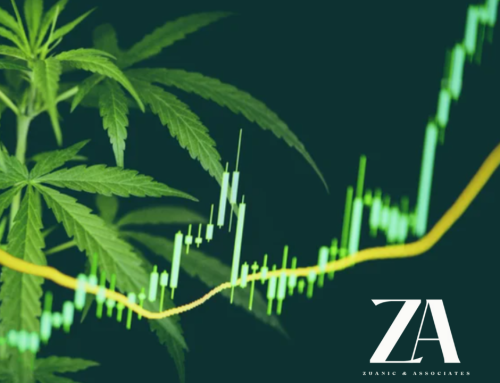Hemp Seeds Market: Trends for 2019 – 2020 and Forecasts to 2030
New York – Reportlinker.com announces the release of the report “Hemp Seeds Market : Segmented By Application Type ; by Product Type and Region – Global Analysis of Market Size, Share & Trends for 2019 – 2020 and Forecasts to 2030”
Hemp seeds contain less than 1% and marijuana contains more than 20% of psychoactive medicines. The hemp seed is a wonderful and healthy combination of proteins, fibers, essential fats, amino acids, antioxidants, iron, and vitamins that are easily digested. The seeds are the most nutritive seeds and a gift of nature. The seeds contain high amounts of protein. This is one of the powerful foods offered for optimum health and well-being for life.
Market Highlights
Global Hemp seeds market are expected to project a notable CAGR of 12.75% in 2030.
Global Hemp seeds market to surpass USD 2.65 billion by 2030 from USD 0.80 billion in 2020 at a CAGR of 12.75% in the coming years, i.e., 2021-30. The market is driven by increasing demand for hemp oil and fibers, particularly for the emerging Asia-Pacific industries, for automotive, development, food and drink, personal care, and textile industries. Increased demand is further anticipated to boost demand for oil paints, prints, fuel, solvents, and chain-saw lubricants, buttocks, and coatings. Moreover, growth in hemp-based production process investment should drive growth in the market.
Global Hemp seeds market: Segments
Food segment to grow with the highest CAGR during 2020-30
Global Hemp seed market is segmented by Application Type into Food, Beverages, Personal Care Products, Textiles, and Pharmaceuticals. During the projected timeline, the Food segment is expected to have the highest market share. Due to their high vitamin, protein, and omega-3 fatty acid subject matter, the industry of hemp was dominated by the food segment in 2020 owing to the extensive application of hemp seeds and hemp seed oil. Hemp seeds are eaten raw or topped with cereals, smoothies, and yogurt. Increasing consumer awareness on the importance of hemp-based products drives the market for food applications.
Seeds segment to grow with the highest CAGR during 2020-30
Global Hemp Seeds market is divided by product type into Seeds, Fiber, Shives. As an alternative method of food and feed proteins, hemp seeds and oilcake are used in the food and beverage industry. In soap, lotions, shampoo and shower gels, and beauty products, oil obtained from shredded seeds is used. In the textiles, buildings, food, care products, and animal care industry, growing demand for industrial hemp is anticipated to stimulate growth in the years to come. Seeds are primarily used for oil consumed by the food and beverage industries, personal treatment, and feed. Oil is also used with medicinal and therapeutic nutritious additives such as pharmaceutical products. As a result of increasing demand in the application industries over the projected timeframe, the market for seeds will grow in a CAGR.
Market Dynamics
Drivers
Health Benefits
Hemp seeds from plant Cannabis sativa incorporate only tetrahydrocannabinol trace amounts (THC). They are abundant in linoleic (omega-6) and linolenic two vital nutrients (omega-3). Vitamin B1, vitamin B2, vitamin B6, vitamin D, calcium and magnesium, as well as potassium are also a component rich in vitamin E. Very low concentrations of plant-based food are a proper source of protein; on the other hand, hemp seeds contain sufficient protein to contribute positively to a vegetarian diet. The addition of hemp seed can be useful to people because it is an important source of linoleic (omega-6) and linolenic acids (omega-3).
Provide people with supplementary nutrients.
Hemp seeds contain all 20 amino acids containing the 9 essential acids that our body cannot generate (EAAs). High level of protein that enhances the immune system and decreases toxic substances is contained in such seeds. These seeds ingested in any way could cure diseases of immune deficiency. Highest source of fatty acids, botanically in nature. A superior vegetarian protein source that is easily digestible. It has a rich source of immunity, blood flow, tissue, cells, skin, and Mitochondria-protective nutrients.
Restraint
Strict government regulations
Companies that offer products derived from hemp and hemp seeds need to comply with various regulatory guidelines worldwide. When countries around the world practice different levels of legalization for various kinds of hemp, it may be annoying for producers and stakeholders to act in accordance with the strong regulations rules for producing and selling industrial hemp across multiple areas in the same nation. Furthermore, hemp-containing cannabidiol (CBD) and tetrahydrocannabinol (THC) regulations remain highly variable from country to state, which leads even more to commodity trading problems.
Global Hemp seeds market: Key Players
Ecofibre (Australia)
Company Overview, Business Strategy, Key Product Offerings, Financial Performance, Key Performance Indicators, Risk Analysis, Recent Development, Regional Presence, SWOT Analysis
GenCanna (US)
Hemp Inc. (US)
South Hemp Tecno (Italy)
HempFlax BV (Netherlands)
Konoplex Group (Russia)
MH Medical Hemp (Germany)
Hemp Oil Canada (Canada)
BAFA (Germany)
Plains Industrial Hemp Processing (Canada)
Canah International (Romania)
Other Prominent Players
Global Hemp seeds market: Regions
Global Hemp seeds market is segmented based on regional analysis into five major regions. These include North America, Latin America, Europe, Asia Pacific, and the Middle East and Africa. During the projected timeline, North America ought to have the highest share in the total market for Hemp seeds. The US invests significantly in the development of various industrial hemp variants of Tetrahydrocannabinol (THC) content of around 0,3% after its legalized 2020 Farm Bill. China, followed by Hungary and Romania, is the biggest exporter of raw and processed hemp products in the United States During the projected timeframe, rapid expansion in small, niche markets for hemp-based industry and consumer products is predicted to continue driving US overall growth.
The industries are heavily restricted and only in compliance with state, nation, and other national regulations can culture, manufacturing, distribution, marketing, and transport be carried out. Seeds play an important part in the production and quality of products. Asian countries, including China, have a major hemp production and export tradition that has enabled these countries recently to dominate the global market.
Global Hemp Seeds market is further segmented by region into:
North America Market Size, Share, Trends, Opportunities, Y-o-Y Growth, CAGR – United States and Canada
Latin America Market Size, Share, Trends, Opportunities, Y-o-Y Growth, CAGR – Mexico, Argentina, Brazil, and Rest of Latin America
Europe Market Size, Share, Trends, Opportunities, Y-o-Y Growth, CAGR – United Kingdom, France, Germany, Italy, Spain, Belgium, Hungary, Luxembourg, Netherlands, Poland, NORDIC, Russia, Turkey, and Rest of Europe
Asia Pacific Market Size, Share, Trends, Opportunities, Y-o-Y Growth, CAGR – India, China, South Korea, Japan, Malaysia, Indonesia, New Zealand, Australia, and Rest of APAC
Middle East and Africa Market Size, Share, Trends, Opportunities, Y-o-Y Growth, CAGR – North Africa, Israel, GCC, South Africa, and Rest of MENA
Global Hemp seeds market report also contains analysis on:
Hemp seeds Segments:
By Application Type:
Food, Beverages
Personal Care Products
Textiles
Pharmaceuticals
By Product Type
Seeds
Fiber
Shives
Hemp seeds Dynamics
Hemp seeds Size
Supply & Demand
Current Trends/Issues/Challenges
Competition & Companies Involved in the Market
Value Chain of the Market
Market Drivers and Restraints
(This information is primarily sourced from ReportLinker. Highly Capitalized has neither approved nor disapproved the contents of this news release. Read our Disclaimer here).



































